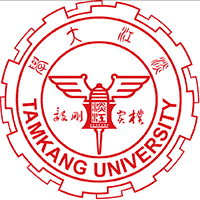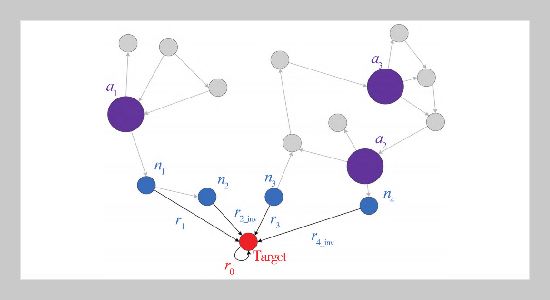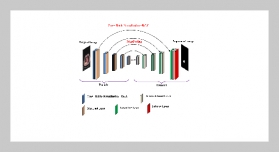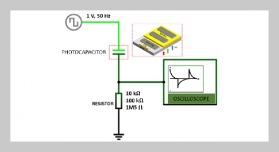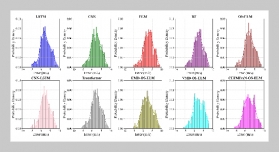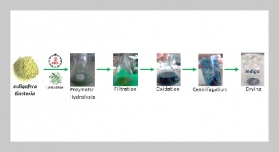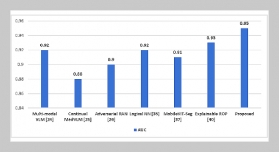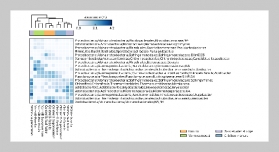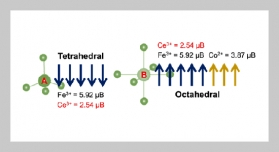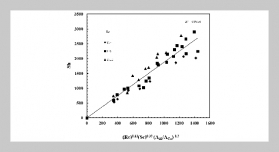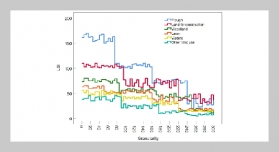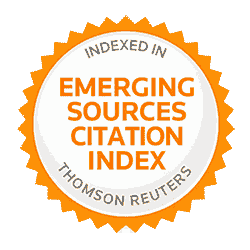- [1] Z. Chen, Y. Wang, B. Zhao, J. Cheng, X. Zhao, and Z. Duan, (2020) “Knowledge graph completion: A review" Ieee Access 8: 192435–192456. DOI: 10.1109/ACCESS.2020.3030076.
- [2] S. Auer, C. Bizer, G. Kobilarov, J. Lehmann, R. Cyganiak, and Z. Ives. “Dbpedia: A nucleus for a web of open data”. In: international semantic web conference. Springer. 2007, 722–735. DOI: 10.1007/978-3-540 76298-0_52.
- [3] A. Madkour, W. G. Aref, and S. Basalamah. “Knowledge cubes—A proposal for scalable and semantically-guided management of Big Data”. In: 2013 IEEE International Conference on Big Data. IEEE. 2013, 1–7. DOI: 10.1109/BigData.2013.6691800.
- [4] F. M. Suchanek, G. Kasneci, and G. Weikum, (2008) “Yago: Alarge ontology from wikipedia and wordnet"Journal of Web Semantics 6(3): 203–217. DOI: 10.1016/j. websem.2008.06.001.
- [5] R. Xie, Z. Liu, J. Jia, H. Luan, and M. Sun. “Representation learning of knowledge graphs with entity descriptions”. In: Proceedings of the AAAI conference on artificial intelligence. 30. 1. 2016. DOI: 10.1609/aaai.v30i1.10329.
- [6] H. Zhu, D. Xu, Y. Huang, Z. Jin, W. Ding, J. Tong, and G. Chong, (2024) “Graph structure enhanced pre training language model for knowledge graph completion" IEEE Transactions on Emerging Topics in Compu tational Intelligence: DOI: 10.1109/TETCI.2024.3372442.
- [7] S. Feng, C. Zhou, Q. Liu, X. Ji, and M. Huang, (2024) “Temporal Knowledge Graph Reasoning Based on Entity Relationship Similarity Perception" Electronics 13(12): 2417. DOI: 10.3390/electronics13122417.
- [8] H. Yang and J. Liu. “Knowledge graph representation learning as groupoid: unifying TransE, RotatE, QuatE, ComplEx”. In: Proceedings of the 30th ACM international conference on information & knowledge management. 2021, 2311–2320. DOI: 10.1145/3459637.3482442.
- [9] C. Jin, R. Cui, and Y. Zhao. “Research on Chinese Korean Entity Alignment Method Combining TransH and GAT”. In: China Conference on Knowledge Graph and Semantic Computing. Springer. 2021, 134–144. DOI: 10.1007/978-981-16-6471-7_10.
- [10] F. Liu, Y. Shen, T. Zhang, and H. Gao, (2020) “Entity related paths modeling for knowledge base completion" Frontiers of Computer Science 14: 1–10. DOI: 10.1007/s11704-019-8264-4.
- [11] M.Zhang and Y.Chen, (2018) “Link prediction based on graph neural networks" Advances in neural infor mation processing systems 31: DOI: 10.1007/978981-16-6054-2_10.
- [12] H. Xiao, M. Huang, Y. Hao, and X. Zhu, (2015) “TransG: A generative mixture model for knowledge graph embedding" arXiv preprint arXiv:1509.05488: DOI: 10. 48550/arXiv.1509.05488.
- [13] X.Tang, L.Chen, J.Cui, and B.Wei,(2019)“Knowledge representation learning with entity descriptions, hierarchical types, and textual relations" Information Processing & Management 56(3): 809–822. DOI: 10.1016/j.ipm.2019.01.005.
- [14] B. An, B. Chen, X. Han, and L. Sun. “Accurate text enhanced knowledge graph representation learning”. In: Proceedings of the 2018 Conference of the North American Chapter of the Association for Computational Linguistics: Human Language Technologies, Volume 1 (Long Papers). 2018, 745–755. DOI: 10.18653/v1/N18-1068.
- [15] Y. Zhao, H. Feng, H. Zhou, Y. Yang, X. Chen, R. Xie, F. Zhuang, and Q. Li, (2022) “EIGAT: Incorporating global information in local attention for knowledge representation learning" Knowledge-Based Systems 237: 107909. DOI: 10.1016/j.knosys.2021.107909.
- [16] Z. Li, X. Liu, X. Wang, P. Liu, and Y. Shen, (2023) “Transo: a knowledge-driven representation learning method with ontology information constraints" World Wide Web26(1): 297–319. DOI: 10.1007/s11280-022-01016-3.
- [17] Z. Li, X. Jin, W. Li, S. Guan, J. Guo, H. Shen, Y. Wang, and X. Cheng. “Temporal knowledge graph reasoning based one volutional representation learning”. In: Proceedings of the 44th international ACM SIGIR conference on research and development in information retrieval. 2021, 408–417. DOI: 10.1145/3404835.3462963.
- [18] J. Hao, M. Chen, W. Yu, Y. Sun, and W. Wang. “Uni versal representation learning of knowledge bases by jointly embedding instances and ontological concepts”. In: Proceedings of the 25th ACM SIGKDD Inter national Conference on Knowledge Discovery & Data Mining. 2019, 1709–1719. DOI: 10.1145/3292500.3330838.
- [19] H.Mousselly-Sergieh, T. Botschen, I. Gurevych, and S. Roth. “A multimodal translation-based approach for knowledge graph representation learning”. In: Proceedings of the Seventh Joint Conference on Lexical and Computational Semantics. 2018, 225–234. DOI: 10.18653/v1/S18-2027.
- [20] N. Passalis, M. Tzelepi, and A. Tefas, (2020) “Proba bilistic knowledge transfer for lightweight deep representation learning" IEEE Transactions on Neural Networks and learning systems 32(5): 2030–2039. DOI: 10.1109/TNNLS.2020.2995884.
- [21] T. Chen, L. Lin, R. Chen, Y. Wu, and X. Luo, (2018) “Knowledge-embedded representation learning for fine-grained image recognition" arXiv preprint arXiv:1807.00505: DOI: 10.48550/arXiv.1807.00505.
- [22] W.Gan, Y. Sun, and Y. Sun, (2022) “Knowledge structure enhanced graph representation learning model for attentive knowledge tracing" International Journal of Intelligent Systems 37(3): 2012–2045. DOI: 10.1002/int.22763.
- [23] B. Wang, T. Shen, G. Long, T. Zhou, Y. Wang, and Y. Chang. “Structure-augmented text representation learning for efficient knowledge graph completion”. In: Proceedings of the Web Conference 2021. 2021, 1737–1748. DOI: 10.1145/3442381.3450043.
- [24] C. Zhao, J. Jiang, Y. Guan, X. Guo, and B. He, (2018) “EMR-based medical knowledge representation and inference via Markov random fields and distributed representation learning" Artificial intelligence in medicine 87: 49–59. DOI: 10.1016/j.artmed.2018.03.005.
- [25] J. Zhang, S. Liang, Y. Sheng, and J. Shao, (2022) “Tem poral knowledge graph representation learning with local and global evolutions" Knowledge-Based Systems251: 109234. DOI: 10.1016/j.knosys.2022.109234.
- [26] G. Niu, Y. Zhang, B. Li, P. Cui, S. Liu, J. Li, and X. Zhang. “Rule-guided compositional representation learning on knowledge graphs”. In: Proceedings of the AAAI conference on artificial intelligence. 34. 03. 2020, 2950–2958. DOI: 10.1609/aaai.v34i03.5687.
- [27] H. Liu, C. Li, Y. Li, and Y. J. Lee. “Improved base lines with visual instruction tuning”. In: Proceedings of the IEEE/CVF Conference on Computer Vision and Pattern Recognition. 2024, 26296–26306. DOI: 10.1109/CVPR52733.2024.02484.
- [28] T. Shen, Y. Mao, P. He, G. Long, A. Trischler, and W. Chen, (2020) “Exploiting structured knowledge in text via graph-guided representation learning" arXiv preprint arXiv:2004.14224: DOI: 10.48550/arXiv.2004. 14224.
- [29] S. Seo, B. Oh, and K.-H. Lee, (2020) “Reliable knowledge graph path representation learning" IEEE Access 8: 32816–32825. DOI: 10.1109/ACCESS.2020.2973923.
- [30] M.Fan, Q.Zhou, T.F.Zheng, and R.Grishman,(2017) “Distributed representation learning for knowledge graphs with entity descriptions" Pattern Recognition Letters 93: 31–37. DOI: 10.1016/j.patrec.2016.09.005.
- [31] P.Wang, S.Li, and R.Pan.“Incorporating ganfornegative sampling in knowledge representation learning”. In: Proceedings of the AAAI conference on artificial intelligence. 32. 1. 2018. DOI: 10.1609/aaai.v32i1.11536.
- [32] Z. Feng, D. Tang, X. Feng, C. Zhou, J. Liao, S. Wu, B. Qin, Y. Cao, and S. Shi, (2024) “Pretraining without wordpieces: learning over a vocabulary of millions of words" International Journal of Machine Learning and Cybernetics 15(9): 3989–3998. DOI: 10.1007/s13042-024-02132-4.
- [33] Y.Jiang and S. Yin, (2023) “Heterogenous-view occluded expression data recognition based on cycle-consistent ad versarial network and K-SVD dictionary learning under intelligent cooperative robot environment" Computer Science and Information Systems 20(4): 1869–1883. DOI: 10.2298/CSIS221228034J.
- [34] Z. Zhang, L. Cao, X. Chen, W. Tang, Z. Xu, and Y. Meng, (2020) “Representation learning of knowledge graphs with entity attributes" IEEE Access 8: 7435 7441. DOI: 10.1109/ACCESS.2020.2963990.
- [35] S. Yin, H. Li, A. A. Laghari, T. R. Gadekallu, G. A. Sampedro, and A. Almadhor, (2024) “An Anomaly Detection Model Based on Deep Auto-Encoder and Cap sule Graph Convolution via Sparrow Search Algorithm in 6G Internet of Everything" IEEE Internet of Things Journal 11(18): 29402–29411. DOI: 10.1109/JIOT.2024. 3353337.
- [36] Z.Li, Q.Zhang, F.Zhu, D.Li, C.Zheng, and Y.Zhang, (2023) “Knowledge graph representation learning with simplifying hierarchical feature propagation" Information Processing & Management 60(4): 103348. DOI: 10.1016/j.ipm.2023.103348.
